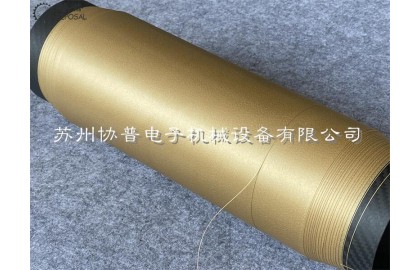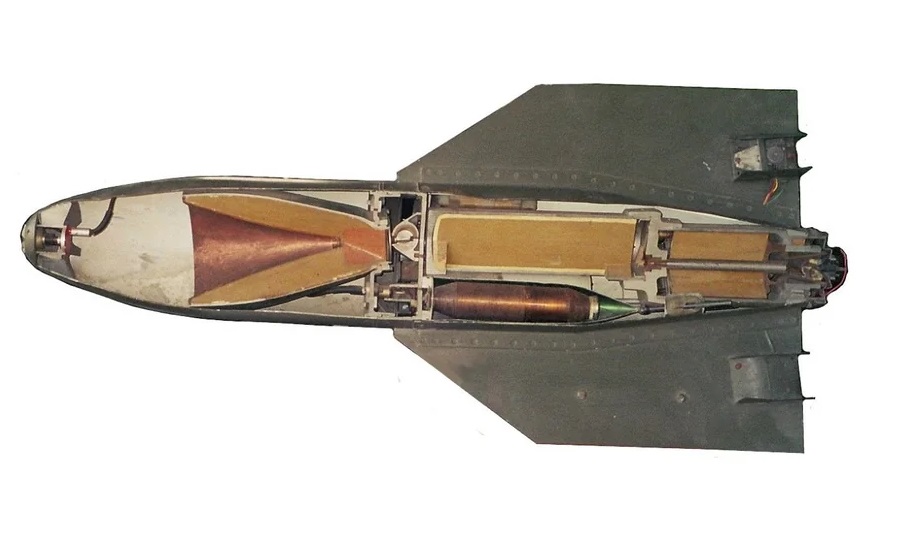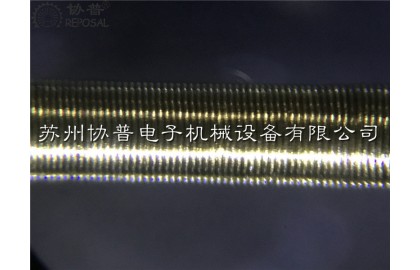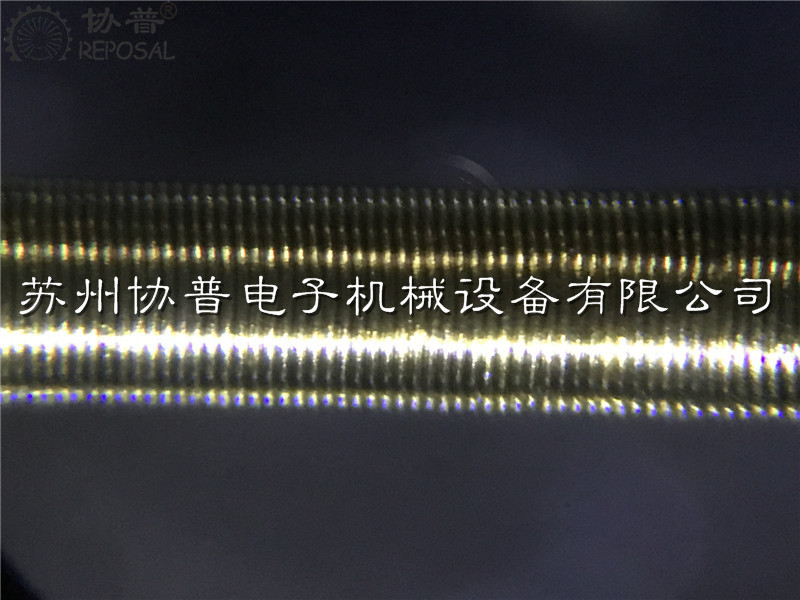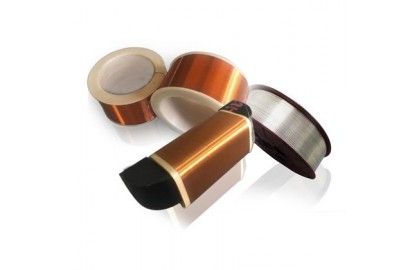REPOSAL® machine research on tension control of transformer winding machine
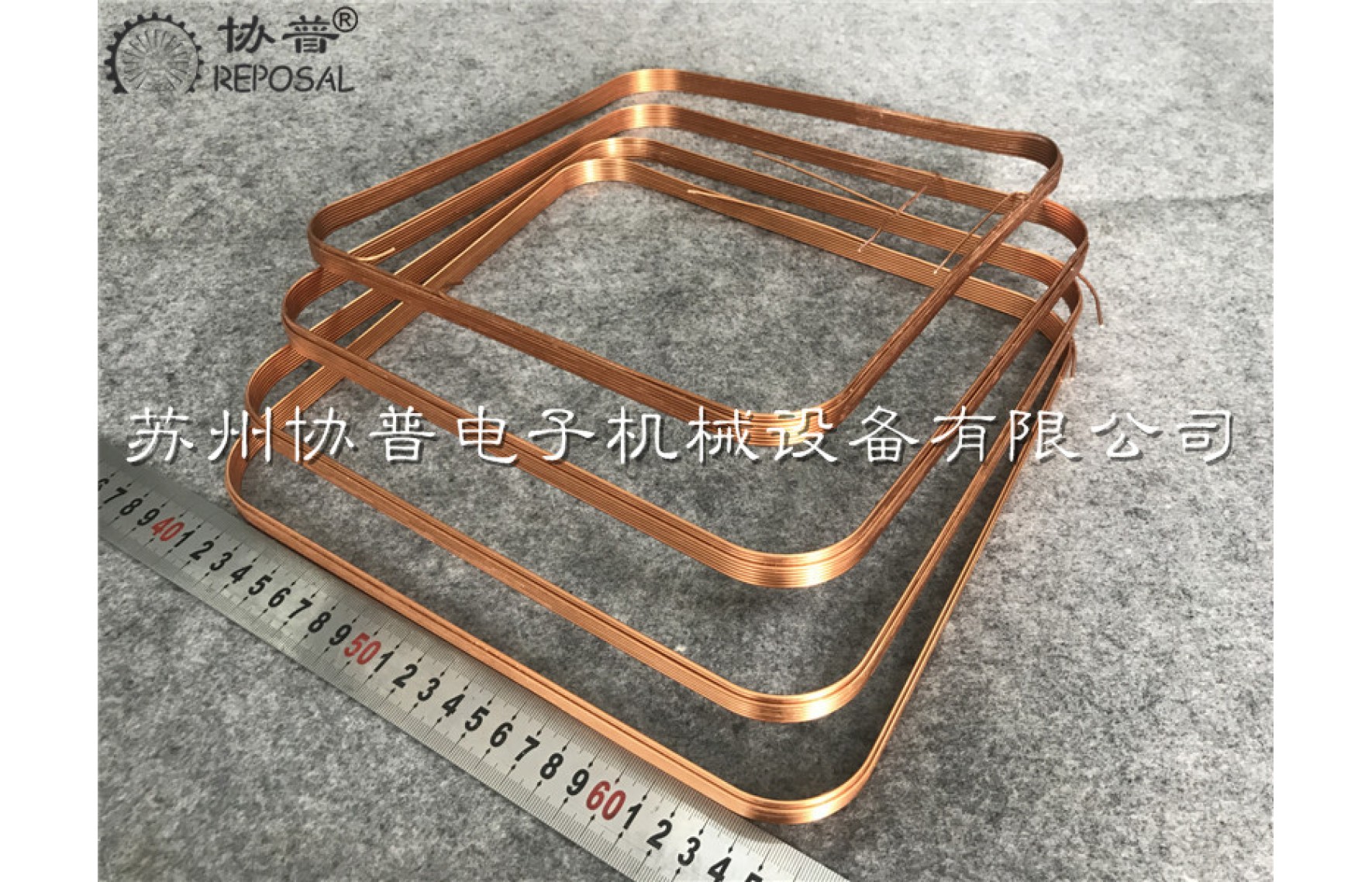
In modern society,
electricity is like a surging torrent, injecting strong impetus into our life
and production. With the rapid development of China's science and technology
and economy, the demand for electricity is increasing day by day, and the
demand for transmission and distribution transformers, as an important
cornerstone of the power system, is also rising.
The transformer is
the "heart" of the power system, and the winding coil inside it is a
key component of this "heart". The winding quality of the enameled
wire and insulating tape in the winding coil directly determines the
reliability of the transformer. The quality of this winding depends to a large
extent on the performance of the transformer winding machine.
With the sharp
rise in demand for transformers, the performance requirements for transformer
winding machines are becoming more and more demanding. A high-performance
transformer winding machine must not only meet the requirements of safety,
intelligence and high efficiency, but also have high-stability hardware,
easy-to-use software and excellent tension control.
However, at
present, the development of China's transformer winding machine industry is
still facing many challenges. The level of intelligence is relatively low, the
stability needs to be improved, and most of the high-end equipment relies on
imports, and the price is high.
REPOSAL® machine
is well aware of these challenges and has been working hard to improve the
performance and quality of its products. It continues to increase R&D
investment, is committed to improving the intelligent level and stability of
the winding machine, and strives to contribute to the development of the
industry.
When the
transformer winding machine is working, its coil is usually metal wire and
insulating paper, because they have a certain elasticity, the change of coil
conveying speed or roll radius will lead to the change of winding tension. For
example, in the winding and unwinding process, if the angular velocity of the
roll is constant, the change in the radius of the coil will cause tension
fluctuations. If the tension is too large, the coil may become thinner or even
break; If the tension is too small, the material will be unevenly arranged or
wrinkled, which will affect the quality of the transformer winding coil.
Compared with
foreign countries, China's existing domestic transformer winding machine has
deficiencies in tension control. Its tension is usually generated by mechanical
friction, which is not stable enough, which can easily lead to problems such as
sparse arrangement of wires and insulating tapes, and out-of-tolerance of the
outer diameter of the coil. In addition, compared with developed countries in
Europe and the United States, there is a gap in the overall development level
of China's transformer winding machine in terms of processing quality and
production efficiency.
The specific
performance is as follows: First, the processes such as wiring and wiring,
adding insulation layers rely on manual operation, which is inefficient and unstable
in quality. Second, the motor frequently starts, stops and reverses during the
winding process, the tension fluctuates greatly, the coil winding is irregular,
and the quality is difficult to guarantee. Third, the mechanical structure of
the domestic winding machine is relatively simple, and it is not competent for
the winding task of complex coils.
The development of
foreign transformer winding machines is relatively mature. The T-600AH
automatic transformer winding machine from Trishul.Engineers in India can wind
wires and insulating tapes synchronously, with high precision, stable tension
and high efficiency. The EFECO 800 automatic winding machine from
Tuboly.Astronic AG in Switzerland is even more excellent, with high-speed,
high-precision winding and an intelligent cable routing system. The products of
companies such as MTM in Canada, LAE in Italy and UPI in Korea also have high
intelligence and stability.
In terms of
tension control research, many scholars have been exploring it in depth since the
90s of the last century. Bastogne T, Koc H and other scholars have pioneered
theoretical research and modeling simulation. Entering the 21st century, more
scholars are getting involved.
REPOSAL® machine
actively pays attention to the relevant research results at home and abroad,
and applies beneficial theories and technologies to the improvement of its own
products.
The winding
electronically controlled tracking system proposed by Mahawan B et al. in 2001
can still realize the trajectory tracking control of equipment under large
interference. In 2008, Wen P et al. designed a tension control scheme that
allowed the winding speed to be changed under a certain tension fluctuation
while maintaining quality. In 2010, Ponsart J C et al. applied the observer
theory to a transformer winding machine to improve the accuracy of tension
control. In 2017, Mahesh Ghate et al. optimized the tension system for a
specific winding machine and showed good robustness. In 2020, Ma Quanjin et al.
designed a dual-PID tension control system to address the tension fluctuation
problem in a 3-axis fiber winding machine applied with filament winding
technology.
Since the 70s of
the last century, China has begun to develop transformer winding machines, and
has achieved certain results through imitation and the efforts of scholars.
However, due to the monopoly of foreign core technologies, there is still a gap
with foreign countries, especially in terms of manufacturing processes and
control schemes.
At present, the
domestic transformer winding machine is mainly in the semi-automatic stage. For
example, F. of Dongguan Zongheng Electromechanical Technology Co., Ltd. TWloo
CXL transformer winding machine for small and medium-sized transformer coil
winding. The ZBR.800/1000/1200 multi-head automatic wiring winding machine of
Jiangxi Yibo Automation Equipment Co., Ltd. can realize automatic wire
arrangement.
REPOSAL® machine has been committed to promoting the
development of domestic transformer winding machine in the direction of full
automation and intelligence, and constantly optimizing its own manufacturing
process and control scheme.
However, there is still a breakthrough in the layout of
insulating tape and tension control in China, which greatly affects the quality
and production efficiency of the winding coil. Therefore, it is of great
significance to develop a control system that can automatically arrange wires
and insulating tapes with constant tension.
Tension control is a key technology for transformer
winding machine equipment. If the tension is too small, the wire or insulating
tape will slacken, accumulate and wrinkle; Excessive tension can cause it to
deform, stretch excessively, or even break. For transformer winding machines,
the tension control condition directly affects the compactness between the
layers of the winding wires.
At present, there are three main schemes of tension
control: manual, semi-automatic and fully automatic. The manual control needs
to be adjusted manually in stages, the semi-automatic control adjusts the
tension by detecting the change of the roll diameter, and the fully automatic
control is adjusted by directly measuring and feeding back the tension data by
the tension detector.
In the 80s of the last century, manual tension control
was mostly used in China, which was gradually replaced due to the increase in
demand. Since the beginning of this century, domestic scholars have conducted
in-depth research on the automatic tension control system for rewinding and
unwinding.
In 2005, Yang Tao and others from Tianjin Polytechnic
University used a PLC design scheme to accurately control the winding speed of
fine enameled wire. In 2010, Shi Yaoyao et al. studied the discontinuous coil
process and realized winding through the PID algorithm. In 2018, Zhiyong w et
al. established a constant tension control system for the problem of triaxial
fiber winding machine. In 2020, Song Chenliang et al. optimized the tension
adjustment effect of the winding machine through the pendulum tension
adjustment mechanism and the deformed PID control algorithm.
REPOSAL® machine has never stopped exploring tension
control solutions, and constantly tries to innovate to enhance the
competitiveness of products.
However, due to the complex structure of transformer
winding equipment and many influencing factors, the tension control system has
nonlinearity and coupling in different situations, which is still a difficult
point in equipment control. Constant tension control is very important to
ensure the quality of winding, so it is of practical significance to study the
constant tension control system suitable for industrial production.
In the winding coil structure of distribution
transformer, insulating paper tapes need to be arranged between the wire
layers, so the transformer winding coils are usually wound in layers. The
winding process is more complicated, the pilot wire is unwound and sent to the
spindle mold base, during which the oscillating roller adjusts the tension and
speed, and the spindle motor drives the spindle winding. Then the insulating
tape is unwound and sent to the spindle mold base, and multiple coil rolls
cooperate to adjust the tension. Finally, a plurality of motors work together
to drive the spools and other spools for the first layer of winding and arrangement,
after the completion of the wire motor reversal, the pressure roller shears the
insulating paper, the glue sprayer glues, and then the next layer of winding.
Taking Switzerland EFECO 800 transformer winding machine
as an example, its mechanical structure mainly includes spindle mold base,
winding spindle, glue spraying machine, etc. The winding spindle includes a
spindle motor, a reducer, etc., which drives the spindle to rotate and the foot
switch controls the start and stop. The wire winding mechanism has pay-off
wheels, adjusting handwheels, etc., and the insulating tape winding mechanism
has tension feedback devices. The wiring mechanism is composed of a wire spool,
a wire trolley, etc., which can achieve accurate wire arrangement.
For transformer winding machines, the tension control
directly affects the compactness between the winding lines. In practice, the
machining accuracy and the performance of the sensing device will have an
impact on the tension control. For example, the change of reel diameter, the
start-stop and acceleration and deceleration of the reel, the accuracy of
equipment manufacturing and assembly, the forward and reverse rotation of the
motor, and the hardware performance.
There are three ways to test tension. Directly using the
tension sensor to measure, the operation is simple but the limitation is large;
Floating roller tension detection, the measuring device is flexible but the
accuracy is low; Floating roller/feedback composite tension detection, high
accuracy but complex method.
In the process of arranging the transformer winding
machine, the adjustment of the wiring mechanism and the winding position and
the control of the wiring angle are the key to ensure the compactness of the
winding wire.
The cable arrangement mechanism measures the angle
through the rotary encoder on the spindle and transmits the data to the
controller, and the controller drives the wire motor after processing to
realize the speed coupling of winding and wire arrangement.
In the actual winding, the tension of the wire and the
insulating tape should be kept constant and cooperate with the wire
arrangement. In the automatic wiring control scheme, the main controller
controls the motor unit to work together, the spindle and the wiring mechanism
cooperate with the layered winding, the encoder feeds back the data in real
time, and adjusts the speed of each axis according to the control algorithm to
ensure the accuracy of the wiring.
The angle of the cable is very important, too large or
too small will affect the effect of the line. When winding, the line is
adjusted according to the change in angle, the feed rate is brought in, and the
overall trajectory is followed. Since winding is carried out in layers, divided
into wire layers (odd layers) and insulating layers (even layers), the wire
laying process can be divided into multiple stages and cycles.
The automatic wiring of the transformer winding machine
has high requirements for the motor control algorithm, which requires the
coordinated operation of the motors of each shaft and the close cooperation of
the drive actuator to jointly complete the automatic winding and arrangement of
the transformer coil. The common multi-motor cooperative control structures
include parallel synchronous control, master-slave motor control,
cross-coupling collaborative control, adjacent cross-coupling control and
deviation coupling step control, each with its own advantages and
disadvantages.
In conclusion, transformer winding machines are very
important in the power field. Although China has made certain achievements in
this field, it still needs to make continuous efforts to strengthen independent
research and development, improve the technical level, narrow the gap with
foreign countries, promote the development of the industry, and contribute more
to the power industry. REPOSAL® machine will continue to uphold the spirit of
innovation and enterprising, and make unremitting efforts to improve the
overall level of China's transformer winding machine.

